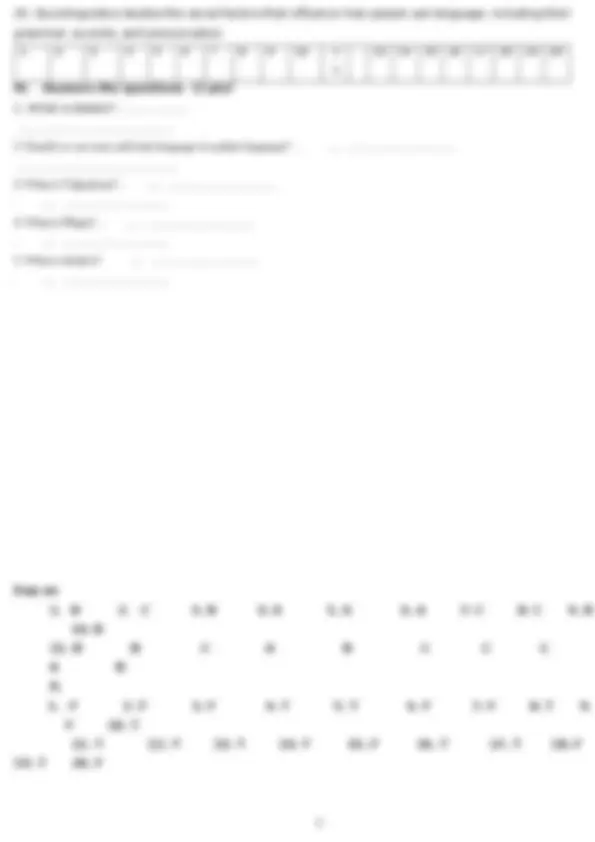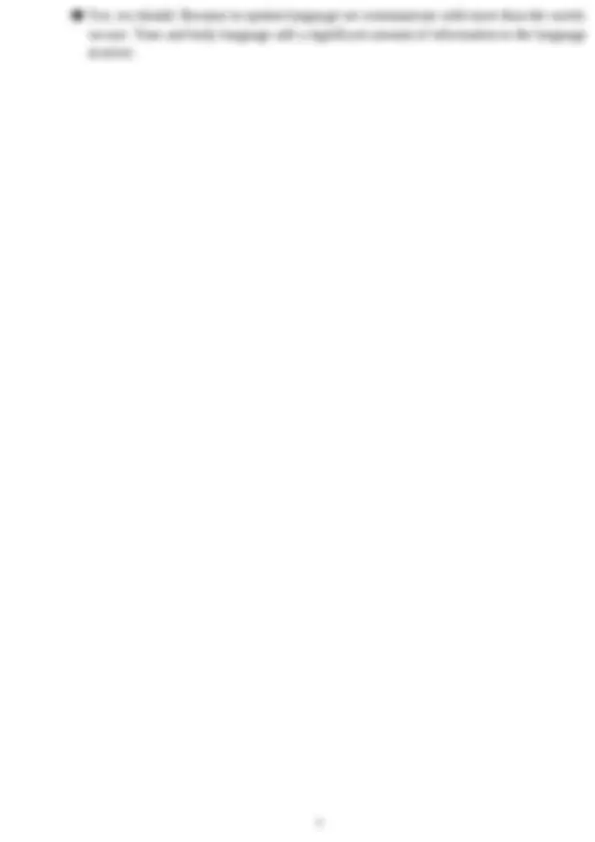MID-TERM (60- MINUTE)
Name: Class: Wed (Ca 1) 26/10/2022
I. Choose a correct one to complete each of the following sentences (4 pts)
1. Identify the function of the sentence: "I recommend that you eat less foods with cholesterol."
A. Representative B.Directive C. Commissive
2. Spoken language is generally less ..….than written language.
A. Obvious B. informal C. precise
3. How can spoken and written language be distinguished?
A. Spoken language is generally less formal and precise than written language.
B. Written language is often less articulate and sophisticated than spoken language. C. Both A
and B
4. In grammar, expletives are words that have ............... purpose but no real ............
A. Grammatical – meaning B. Semantic – meaning C. Phonological - function
5. What is convergence?
A. Process of adapting own speech to reduce social distance.
B. Process of adapting own speech to adjust the style to the interlocutor.
C. Process of adapting own speech to emphasize social distance.
6. H’Mong ethnic people in VietNam learn and use the Vietnamese script is the typical illustration of
which of the following:
A. Convergence B. Divergence C. Idiosyncratic
7. Men were considered as ___________, compared to women who were seen ___________.
A. Inferiors/ superiors. B. Ordinary/ the same C. Superiors/ Inferiors.
8. Identify the function of the sentence: "I solemnly swear that I am up to no good."
A. Directive B..Expressive C. Commissive
9. Which of the following is one of the four main purposes of the act of saying something?
A. Stating an opinion, firming or denying something B. Stating an opinion, confirming or denying
something
C. Expressing love to the partner@
10. Perlocutionary act is the effect of a(n)@ __________ on an interlocutor
A. sentence B. utterance C. utter
11. How many types of commissive speech act? What are they?
A. promise, order, requests, and offer B. promise, refusal, threat, and offer
C. thanking, apologizing, congratulating, and greeting
12. Varieties can be distinguished by:
A. Vocabulary, speaker, usage, context B. Vocabulary, usage, tone, prosody C. Vocabulary,
grammar, phonology, prosody
13. How many types of codeswitching are there?
A. 1 B. 2 C. 3
14. What are the three components of social class?
A. Prestige, property and power B. Income, property and fame C. Behavior, profession and
public relations
15. Which types of language register you can only use when you teach?
1












